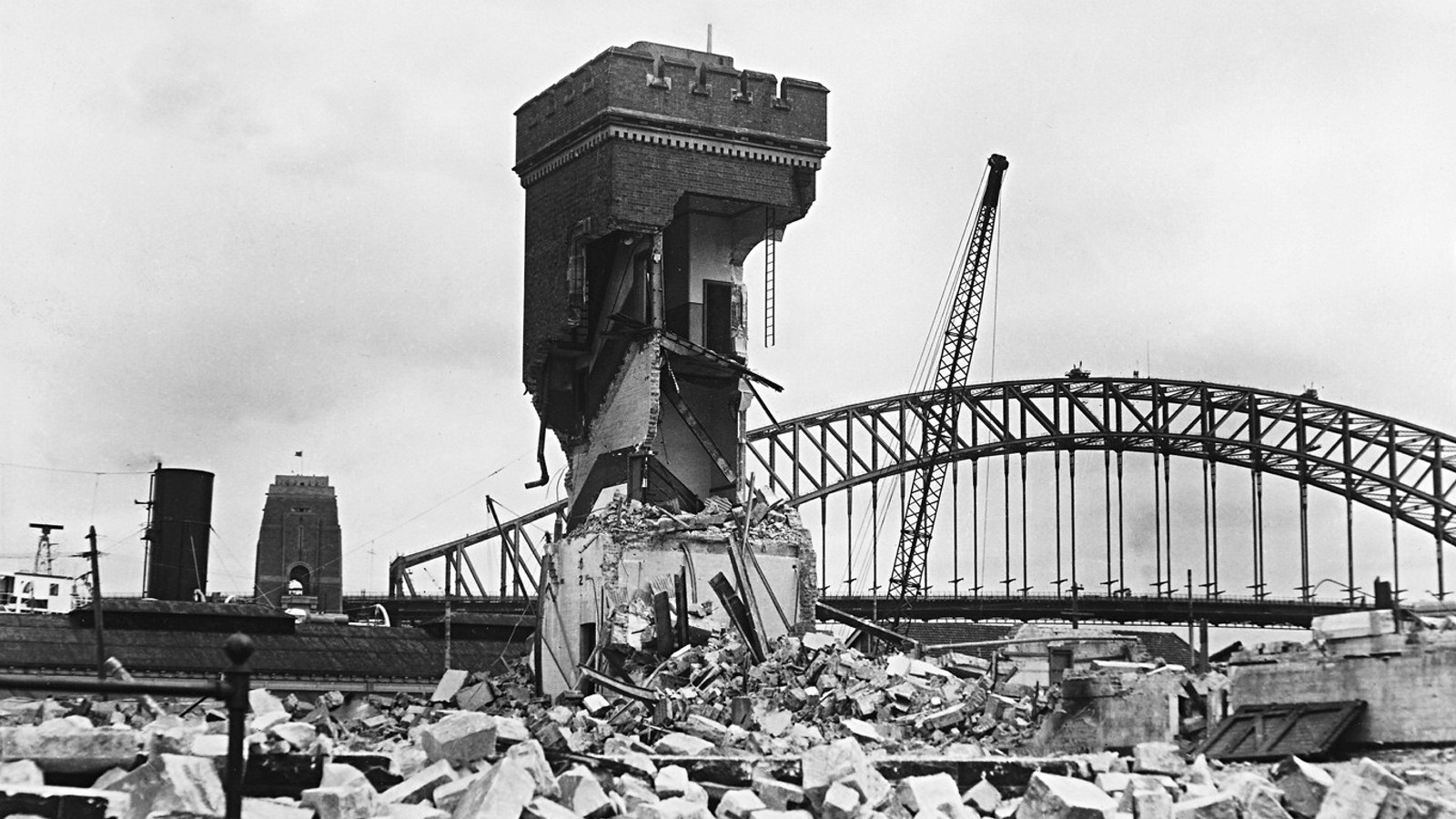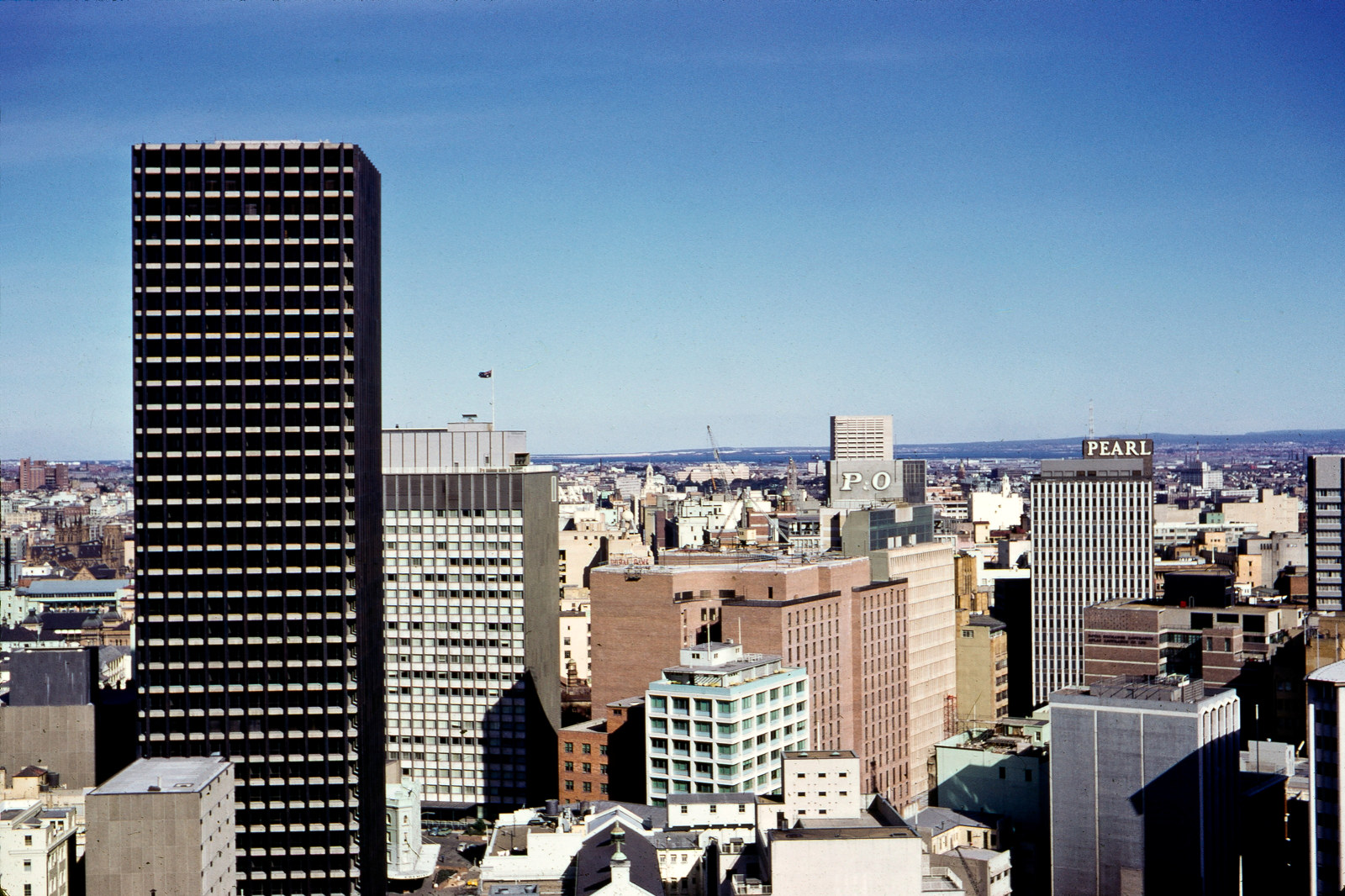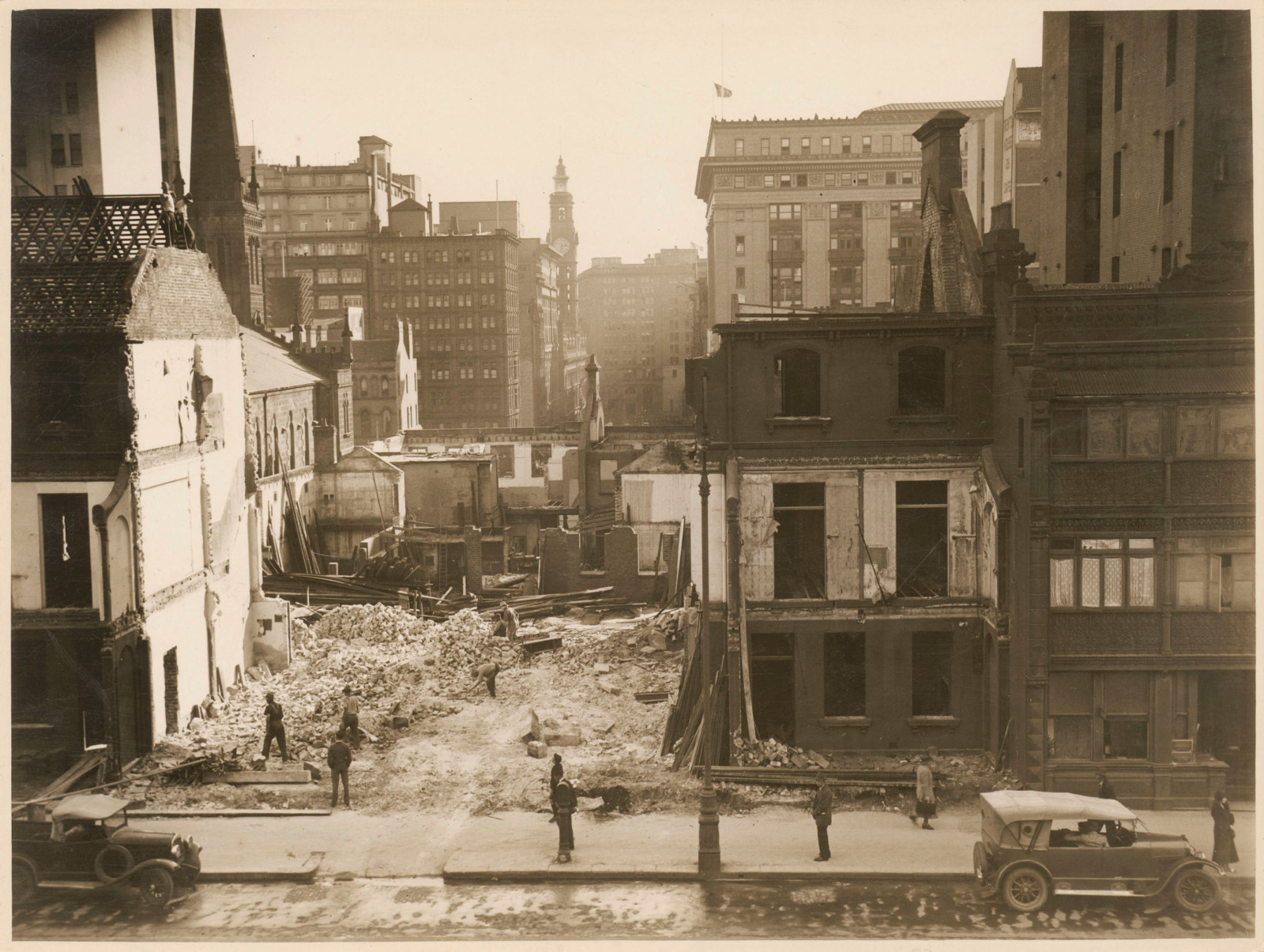Painting Pyrmont
When artist Jane Bennett began capturing Pyrmont’s steel and concrete structures during the late 1980s, many considered them industrial eyesores rather than part of Sydney’s heritage landscape. Soon, these buildings faced demolition, along with the working-class community that had grown around them. Jane’s artworks, some of which feature in Demolished Sydney, help to tell the story of the bustling, smokestack-dotted harbour suburb and its transformation.
From the mid-19th century, workers, wharves and warehouses characterised the inner-city suburb of Pyrmont. An abundance of quality sandstone, used to build some of Sydney’s most well-known heritage buildings including Town Hall, the Art Gallery of New South Wales and St Mary’s Cathedral, was first excavated by quarrymen, before man-made industries, with their factories and warehouses, made the suburb home.
When industrial heritage artist Jane Bennett started painting these buildings and sites decades later, many faced imminent decay. After years of billowing smoke and coal dust, industry in the suburb declined as factories moved away from the city. Jane soon realised that the remaining giant structures, the interiors of which remind her of a cathedral, were disappearing almost as quickly as she could capture them with her oil paints and brush. It’s this period of demolition and development that has both inspired and concerned the artist for over 30 years.
“I paint the damaged, the doomed and the disappeared … All of my work is painted plein air – that means on-site, not from photography. I managed to talk my way into these places and establish myself as a self-appointed artist-in-residence.”
“Photography is quicker, but the thing about painting, if you paint in plein-air, you spend time there. Photography can be threatening – it is an outsider coming in. It was extremely poignant to watch their decline, decay, demolition and eventual replacement.”
Her work, which also spans sites including Darling Harbour, Cockatoo Island, Barangaroo and Sydney’s inner suburbs, raises important questions about our definition of heritage places, now and into the future.
“Change is constant, and when I started painting this sort of thing 30 years ago, nobody thought of it as heritage then. So, I’m painting things now that look, sort of maybe, not quaint or quirky enough. But, trust me, in 30 to 50 years time, they will be.”
Pyrmont Power Station 1904-1993
The Pyrmont Power Station had been derelict for a decade when it was torn down in 1993 to be replaced by The Star Sydney casino complex. The Federation façade of the original 1904 administration building was incorporated into the new development, but the much larger power station, built in the 1950s, was entirely demolished. It had been progressively decommissioned after 1978, when bigger power stations were built closer to the coalfields that fired them.
The demolition of the Pyrmont Power Station was part of a much larger development scheme in Pyrmont and Darling Harbour that replaced industrial buildings and working-class housing with leisure and tourism precincts and up-market apartments – irrevocably changing the character of this part of the city. Huge expressways made it possible to bypass the suburb altogether. By the 1980s Pyrmont was, in the words of one mournful resident, ‘disappearing fast under concrete and glass’.
Colonial Sugar Refinery 1877-1996
The Colonial Sugar Refinery (CSR) stood on the Pyrmont foreshores from 1877 until it was demolished for the Jacksons Landing housing development in 1996. It was the main employer on the peninsula and many of its workers lived nearby in company housing. Images of the refinery show the unique architecture of its silos, boiler houses and chimneys. The clustering of factories, incinerators and power stations at Pyrmont created an environment of industrial-strength noise and smell.
Published on
Related

Past Exhibition
Past exhibition
Demolished Sydney
Demolished Sydney explores the buildings that once shaped the city’s skyline, from the convict built Commissariat Stores to the city's last island of industry, the Kent Brewery
Corner Phillip and Bridge streets, Sydney NSW 2000

Demolished: State Office Block
Constructed as part of the 1960s renewal and modernisation of Sydney, the State Office Block was an innovative and eye-catching addition to the city’s skyline

Demolished: first Government House
Built on a prominent rise overlooking Sydney Cove, first Government House served as the official residence and administrative office for the first nine governors of New South Wales

Unlocked: Demolished Sydney
Like cities across the world, Sydney has been in a constant state of building development and urban change. Our exhibition, Demolished Sydney, looks at how demolitions have shaped our dynamic city landscape